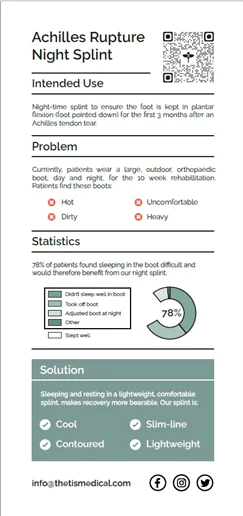

by Matt Solan
LFAC Consultant
Rupture of the Achilles tendon is a serious injury with a long recovery period.
There are over 11,000 cases per year in the UK and this figure is rising as we exercise more in middle and older age.
In recent years, medical evidence has shown that most tendon ruptures do not need surgical repair. Wearing a special boot that holds the foot in a tip-toe position allows the tendon to mend very well. However, many surgeons recommend an ultrasound scan to check that the two torn ends are sufficiently well apposed for natural healing to be reliable.
Occasionally the scan shows a “gap”, with fatty tissue and blood stuck between the tendon ends. In such circumstances an operation to remove the obstruction and ensure that the tendon ends meet is considered. After this surgery the tendon is not completely mended. The same long recovery in a boot is still required.
Casualty First pioneer new Pathway for Achilles Rupture injuries:
In the Emergency Department, patients with a suspected Achilles rupture have a plaster cast or ½ cast applied to protect the leg and hold the toes down, pending specialist referral and ultrasound scan. To perform the ultrasound scan, this cast must be removed and sometimes reapplied afterwards. The whole process is costly and time-consuming.
Casualty First are now using the new Thetis Achilles Rupture Trauma Splint. This light-weight, comfortable purpose-made alternative to a plaster cast can easily be removed/replaced. This allows an ultrasound scan to be performed more promptly. A Foot and Ankle surgery specialist can then provide advice regarding the best treatment, in a timely fashion.
The Thetis Trauma splint has been developed with specialist surgeons from the London Foot and Ankle Centre. The splint is part of a range of innovations designed to help patients to make a faster and more comfortable recovery from their Achilles tendon rupture.
A long ten weeks:
Treating an Achilles tendon rupture requires the foot to be held in a tip-toe position for 10 weeks. Traditional plaster casts have largely been replaced by orthopaedic boots with a high heel or hinges to hold the foot position.
The foot position must be maintained – at all times. If the toes come up too far, then the healing tendon is stretched or re-torn. Just one small mistake can re-tear the tendon and send the patient right back to the beginning!
For this reason, patients are advised to wear their boot in bed at night as well as during the day. This is not popular because the boots are hot, heavy and dirty. Fortunately there is now an alternative.
Thetis Medical, with expert guidance from the London Foot and Ankle Centre, have designed a special light-weight, comfortable Night Splint as an alternative for patients to sleep in. The unique design provides a secure yet comfortable means of protecting the healing tendon while the patient (finally) gets a good night’s sleep.
The London Foot and Ankle Centre is proud to be at the forefront of developments to help patients facing the long recovery from Achilles Tendon Rupture.
- Thetis Medical – Night Splint for Torn Achilles Tendons
- Thetis Medical – Trauma Splint for Torn Achilles Tendons








